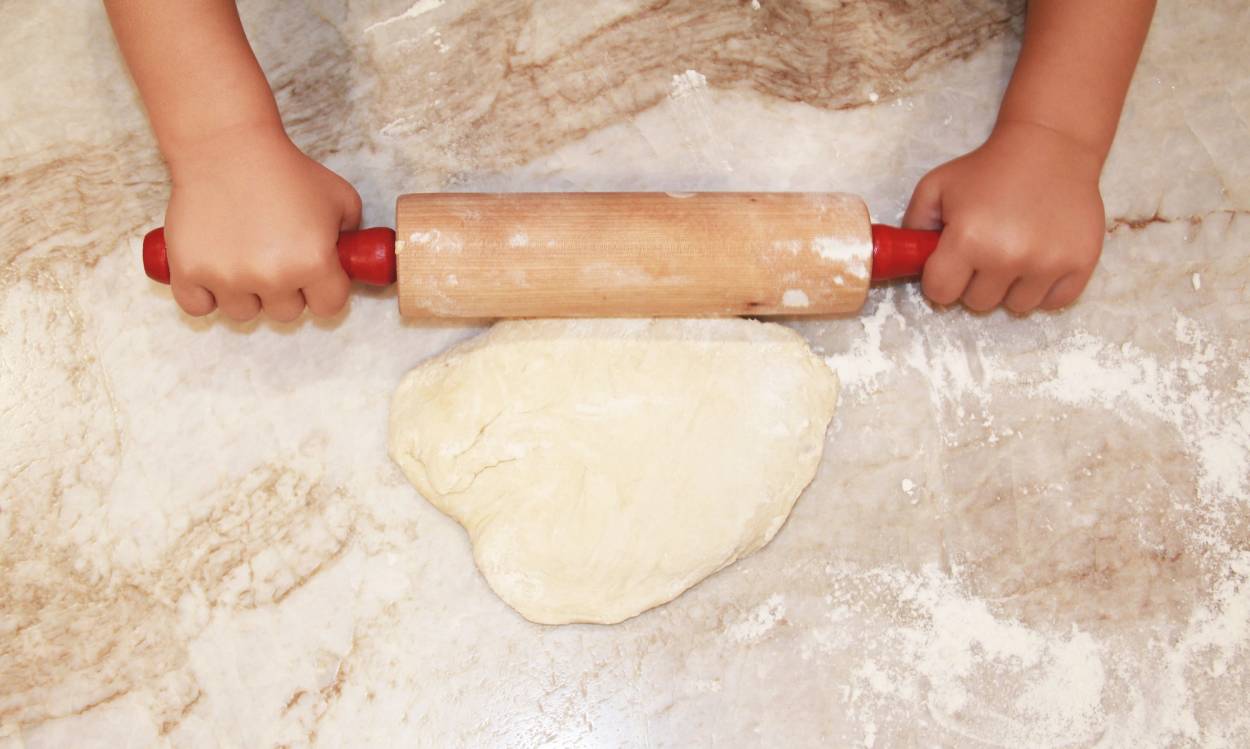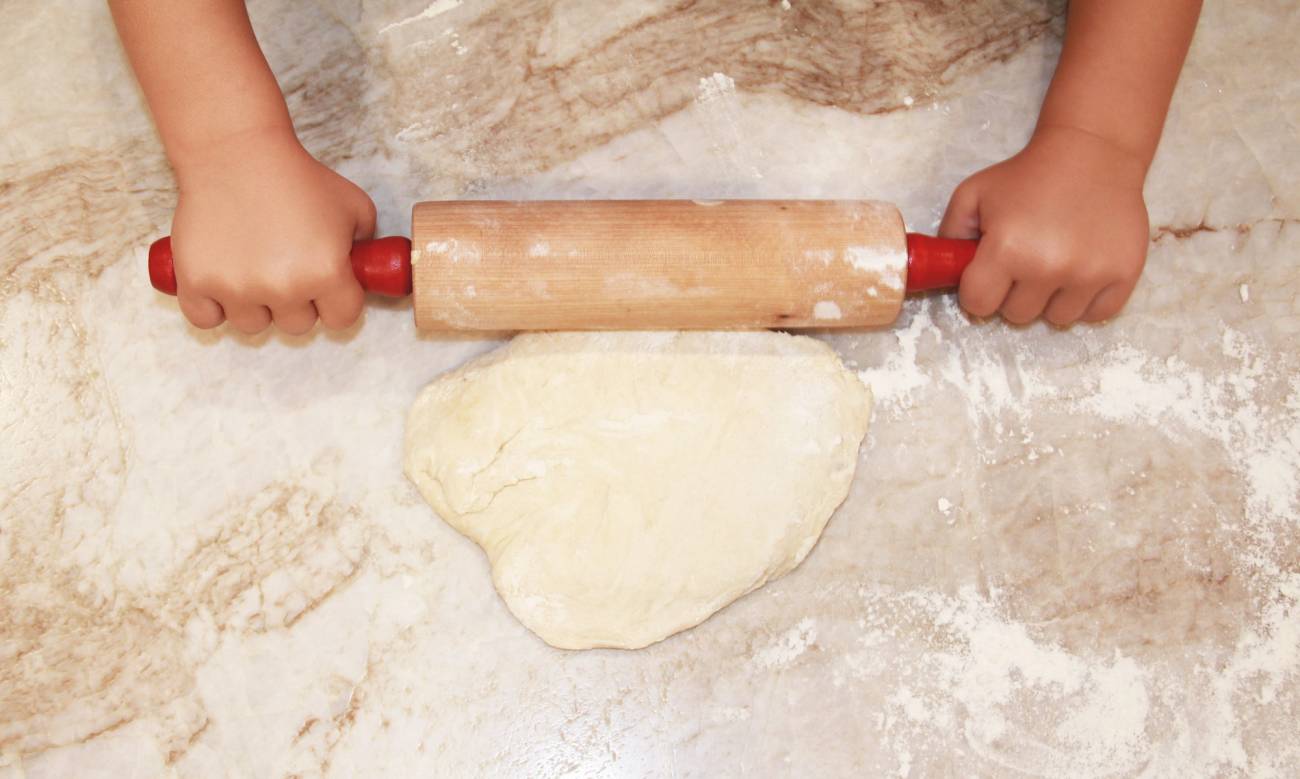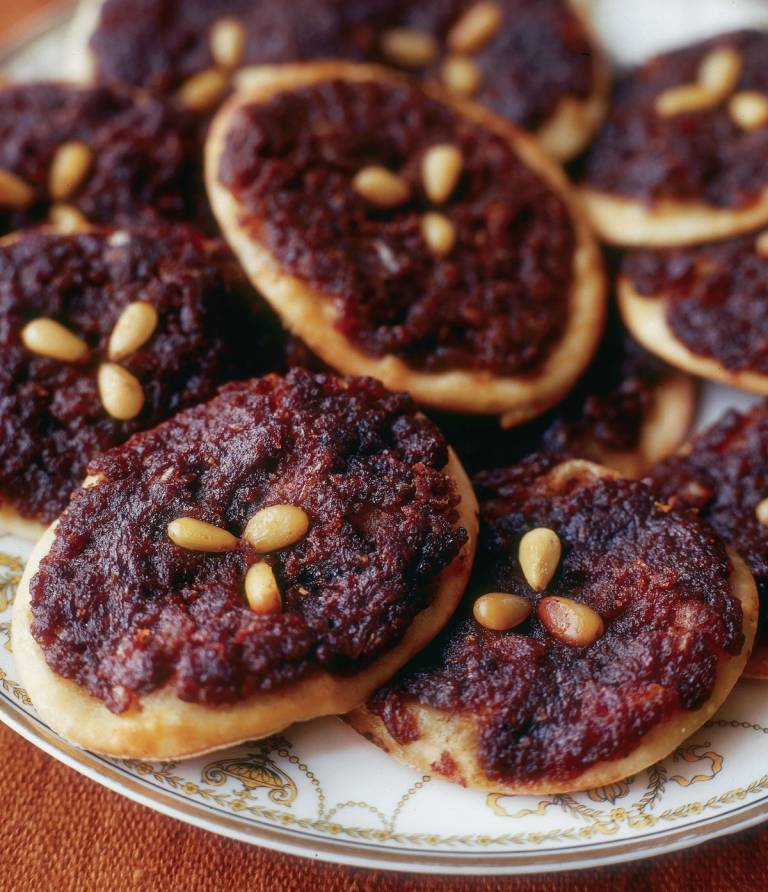When I was growing up, the Sephardic flavors from my dad’s Syrian background dominated the food that both my parents cooked. While my mom grew up in an Ashkenazi household, she learned many of the Sephardic recipes from my father’s mother before they got married. The food we ate at home was unique compared to my American friends. Foods like kibbeh hamdah and mujedra were common weeknight staples. New foods were often introduced by my father shoving a fork near my mouth while saying, “Nu, taste it already.” He’d only tell me what it was after I tasted it. I guess that was his way of exposing me to the flavors and foods he treasured so much.
Sephardic food was the food that designed and defined me. I went to American schools, spoke English, had friends from all different backgrounds, but at home our food was mostly Middle Eastern. I don’t think I became aware of just how different our food was until I began having dinner at friends’ houses and I was served dishes like macaroni and cheese with a side of corn, or pasta with butter. In the third grade, I was tasked with teaching my classmates how to make or do something, and my Sephardic father encouraged me to teach my friends how to make bourekas, a Middle Eastern baked pastry. I loved our traditional cuisine so much that I didn’t get embarrassed by rolling out phyllo dough, while other kids simply taught the class how to play “Mary Had a Little Lamb” on the recorder.
Fast forward 30 years and I’m now a mom with two young children. Sadly, my father passed away three years ago, taking many of his unwritten recipes with him. Since our foods were so unusual, you couldn’t really find them in many restaurants or stores. So, unless I learned how to make these beloved dishes, I’d have to find something else to eat. The longer I let go of these recipes, the more I felt I was disconnecting from my culture. And I desperately want my kids to know the flavors and food traditions of our Sephardic background.
I’m constantly thinking about easy, healthy, likable foods to make for our children. I love following food influencers who make simple, appetizing food that can be made while two little kids are hungry and tired. I try to cook Shabbat dinner every so often, incorporating some of the Sephardic dishes and flavors I love so much. But recently, even with these new additions to my dinner repertoire, I’ve realized that as time goes by, my homemade dinners look less and less like the dinners I grew up with, and more like the bland dinners I’d have at friends’ houses. My kids’ diet has hints of Middle Eastern culture, but overall it looks more American than I’d like. While I pride myself on exposing my kids to the cuisine of other cultures, I find that I don’t expose them to my own as much as I want to.
I’ve been asking myself, “Why am I not incorporating more of the food I treasure?” Part of the answer is that I simply don’t know how to make them, because in our family, recipes weren’t documented. Here, I’m not alone. “Most Syrian recipes were not written down,” Poopa Dweck, author of Aromas of Aleppo: The Legendary Cuisine of Syrian Jews, told me recently. “They existed only in the minds of older cooks.” And now that my father has passed away, it’s more difficult for me to cook the food he used to make; it often pains me not to be able to ask him exactly how much salt to use, or what he thinks of my creations.
In the past few months, I’ve been asking myself how I can combine the traditional, flavorful cuisine of my childhood with simple, kid-friendly recipes that wouldn’t completely overwhelm me. This means more to me than just making sure my children are well fed. I’m constantly trying to teach them who they are, and where they came from, and food was one way I could do that. Expanding their palates and taste buds as toddlers could open up their minds, and help them experience the world in new ways.
The first recipe that came to mind was lahm b’ajeen—literally “meat in dough,” it is sometimes spelled laham b’ajeen and known in other parts of the Middle East as lahmajoun—these are miniature minced meat pies made with tamarind. They can be mistaken for mini pizza pies, although they have a zestier flavor. My kids love pizza: It’s our fun treat when I don’t feel like cooking. While my son, daughter, husband, and I don’t all favor the same food, pizza is the unifier. Plus, the kids both love ground meat. It finally dawned on me: Instead of making pizza with my kids, why don’t I make lahm b’ajeen? My kids would love this dish, and would be so excited to cook it with me.
I knew this was a kid-friendly dish, because I loved it myself when I was a kid. Growing up, we ate lahm b’ajeen on holidays, or as appetizers known as mazza before bigger family meals. I’ve never been a huge meat-eater, but as a child I would scarf down four or five lahm b’ajeen pies. The tangy, acidic flavor was addicting.
Dweck told me why. “Lahm b’ajeen has a distinct flavor from Aleppo, Syria, because the tamarind is very unique to that city,” she said. “All other countries in the Middle East used pomegranate instead of tamarind, but Aleppo was the hub of the trade route, so they had access to these diverse flavors, spices, and cloves that others didn’t.”
I have vivid memories of helping my father and aunt make lahm b’ajeen, but couldn’t remember the recipe myself. So when I decided to try making lahm b’ajeen with my kids, the first thing I did was call my cousin Esther. There is no shortage of cooks in my family, but I know Esther has young children as well, and does what I aspire to do: She incorporates cooking into her family life, and honors the food we grew up with weekly, not just for special occasions.
Esther and I met with our families, and together she walked us through how to make this cherished dish. She adapted her recipe from Dweck’s Aromas of Aleppo, the holy grail of Syrian cookbooks, and naturally, tamarind, the secret to Syrian cooking, was the key ingredient. I was embarrassed to admit I’d never used tamarind in my cooking, and while I owned Dweck’s cookbook, I only admired the recipes and photos, never trying my hand at them. Speaking with Dweck made me realize I could, and should, try.
My kids had a blast cooking with cousin Esther and her family. And watching my son and daughter chow down on their own lahm b’ajeen fed my soul more than ever before. Most of all, they were proud of themselves for cooking a delicious recipe from scratch. I was surprised that Esther didn’t tweak the original recipe much to make it kid-friendly. But when I spoke to Dweck, it all made sense. “While writing my book, I kept saying that I want my 10-year-old daughter to be able to prepare the recipes, so nothing is too complicated,” she said. “And one day I came home and my daughter and her friend were making sambusak, so I guess I succeeded.”
While Dweck is insistent on not making major flavor changes to recipes to accommodate kids, she does suggest making tweaks for different health or dietary needs. Chickpea flour could be a replacement for those unable to eat gluten, safflower oil could replace vegetable oil, and Dweck even suggested mushrooms instead of beef as a topping for those who don’t eat meat.
“When a kid grows up with Syrian cuisine, their palates expand and become sophisticated,” said Dweck. “In any cuisine, the sooner you introduce children to a spectrum of flavors and textures, the more welcoming their palates become. And this goes beyond food—they become more open to trying new things, and exploring new ideas.”
I hold Dweck’s words close to my heart. Cooking lahm b’ajeen with our cousins and speaking with Dweck took away some of the fear and apprehension I had around reclaiming my family’s recipes. “We should all encourage our kids to experiment in the kitchen,” said Dweck. “Because once we bring in the idea of ‘perfect,’ they run away.”
It felt surreal to me, to be cooking this dish I missed so much, with my own children.
Watching my son lick his fingers once he was done assured me that we could bring lahm b’ajeen into our dinner repertoire on a regular basis. They loved the new flavors, but most of all I think my children loved being in the kitchen with me. As we made this dish together, I told them stories about how when I would make this dish with my father, we’d both eat two or three just to see if they tasted right, before they were even served. After the first, we were sure we got it right, but needed one or two more, just to be really sure. I always tell my children what an amazing chef their grandfather was, and cooking this dish together helps keeps those memories alive in a way I was never able to before. They were proud that they were able to make my family recipe, and continue to ask what other family recipes we can make together.
I know I won’t always make my family’s recipes the exact way I remember them, and I know my children won’t like everything I introduce them to, but I’m confident that we’ll learn more about our culture, and where we come from, while we are trying.


